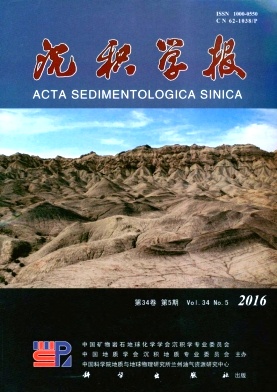Detrital Mineral Distributions in Surface Sediments of the East China Sea: Implications for Sediment Provenance and Sedimentary Environment
doi: 10.14027/j.cnki.cjxb.2016.05.009
- Received Date: 2015-09-01
- Rev Recd Date: 2015-12-11
- Publish Date: 2016-10-10
-
Key words:
- East China Sea /
- surface sediment /
- detrital mineral /
- provenance /
- depositional environment
Abstract: The East China Sea continental shelf is an area characterized by complicated hydrodynamic conditions and large variability in sediment texture. Detrital mineral examinations were carried out on 69 surface sediment samples (0~5 cm) collected from the East China Sea continental shelf to investigate the spatial variations of sediment composition and their underlying mechanisms. The average content of heavy minerals in the study area is 16.3%. The high value zone is located in the middle and outer continental shelf while the inner shelf and the southwest of Jeju Island have much lower content. A total of 49 species of heavy minerals were discovered in the study area, dominated by hornblende and followed by epidote, schistose mineral and carbonate mineral; metallic minerals and pyroxene are in the third row; the rest are tremolite, garnet, sphene, zircon, olivine, glauconite, andalusite and so on. Light minerals mainly consist of feldspar followed by quartz; schistose minerals and calcite are respectively in the third and fourth row. According to the characteristics of detrital mineral assemblages, the East China Sea continental shelf can be divided into three districts:Inner-shelf area (Unit I), Outer-shelf area (Unit Ⅱ) and Tiger Reef area (Unit Ⅲ). Sediments in Unit I are mainly from the Yangtze River and the Fujian and Zhejiang coastal rivers. Hydrodynamic sorting is the primary factor that controls the distribution of detrital minerals in this unit; besides human activities also have a certain impact. However the long-term separation is the main control factor of the distribution of heavy minerals in Unite Ⅱ. In the vicinity of the 29°N, fine-grained sediments from the modern Yangtze River were spreading to the northeast into the sea make an obvious effect on the detrital mineral composition in Unit Ⅱ. Unit Ⅲ has relatively varied provenances and complicated hydrodynamic environment. The materials from the Yellow River, the Yangtze River and submarine volcanos both influence there. Thus it has a bigger difference in detrital mineral assemblages with the first two.
| Citation: | ZHANG KaiDi, LI AnChun, DONG Jiang, ZHANG Jin. Detrital Mineral Distributions in Surface Sediments of the East China Sea: Implications for Sediment Provenance and Sedimentary Environment[J]. Acta Sedimentologica Sinica, 2016, 34(5): 902-911. doi: 10.14027/j.cnki.cjxb.2016.05.009 |






 DownLoad:
DownLoad: